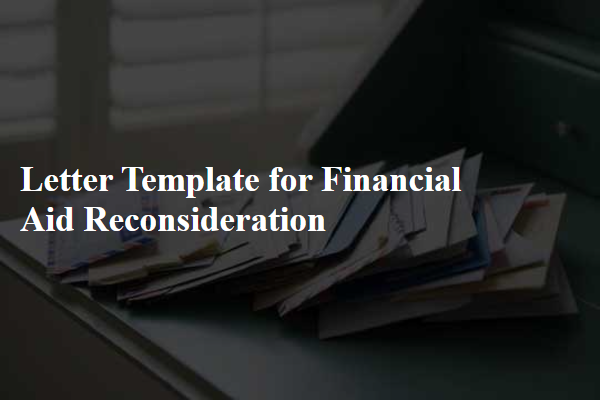Are you ready to master the art of vendor price negotiation? Whether you're seeking better rates or more favorable terms, navigating these discussions can significantly impact your bottom line. In this article, we'll explore essential strategies and effective letter templates that empower you to communicate your needs confidently. So, let's dive in and discover how to initiate those conversations that can lead to fruitful agreements!

Objective Clarity
Effective vendor price negotiation requires clarity in objectives, such as identifying specific budget constraints and desired price points. Establishing benchmarks based on competitor prices (e.g., 10-15% lower than market rates) can aid negotiation discussions. Clearly defined quantities, such as annual order volumes (e.g., 1,000 units), should be communicated to justify pricing expectations. Highlighting potential benefits to the vendor, including long-term contracts or increased sales, can foster a collaborative atmosphere. Researching market shifts or economic conditions (e.g., inflation rates of 3-4%) relevant to pricing can provide leverage. Setting a defined timeline for negotiations, like concluding discussions by the end of the quarter, ensures urgency and focus.
Professional Tone
In the context of vendor price negotiation, it is crucial to establish an atmosphere of collaboration and mutual benefit. A well-structured approach emphasizes the value of a continued partnership while addressing pricing concerns. Begin by clearly outlining the specific products or services under negotiation, citing precise quantities and establishing competitive benchmarks sourced from market research. Highlight previous successful collaborations, emphasizing loyalty and timely payments, as factors that foster a robust relationship. Conclude by proposing a mutually beneficial pricing structure that acknowledges both parties' needs, illustrating a commitment to maintaining quality and service standards. Maintain professionalism throughout to enhance receptiveness and facilitate a productive dialogue.
Data-Driven Justification
Data-driven negotiations enhance vendor price discussions through evidence-based analysis. Historical pricing trends reveal that similar vendors, such as Company A and Company B, maintain average prices at 15% lower than current rates. Market analysis indicates that prices have stabilized, with a decline of approximately 10% over the past year in the relevant sector, specifically in technology supply chains. Our internal procurement data shows that volume discounts from previous contracts resulted in a reduction of approximately 20% in costs, providing a strong precedent for negotiation. Competitor purchasing patterns suggest our organization holds significant leverage, increasing our bargaining position to more favorable pricing terms. Such data demonstrates that our requests are not only reasonable but aligned with market dynamics.
Mutual Benefit Focus
A proactive approach to vendor price negotiation emphasizes mutual benefit, fostering long-term partnerships with suppliers like XYZ Corporation. Clear communication of anticipated volume increases (up to 20% over the next year) can showcase commitment, while discussing competitive market trends--such as a 15% decrease in raw material costs--presents opportunities for price adjustments. Highlighting the value of a reliable supply chain relationship, especially in critical sectors like manufacturing, encourages collaborative discussions. Additionally, proposing flexible payment terms could stimulate agreement, benefiting cash flow for both parties, while reinforcing loyalty and ongoing support. Building a partnership model based on shared success may lead to innovative solutions and improved service delivery, ultimately enhancing competitiveness in the market.
Flexibility and Openness
In a highly competitive market, flexibility in pricing strategies is essential for vendors aiming to foster long-term relationships with clients, ensuring mutual growth and profitability. Open communication can lead to more favorable negotiation outcomes, as both parties can align their expectations and needs. Vendors often utilize market analysis to determine pricing structures that allow room for negotiation while meeting budget constraints. Implementing adaptive pricing methods, such as volume discounts or tiered pricing based on purchase frequency, can encourage larger orders from clients. Additionally, engaging in transparent discussions regarding the rationale behind pricing adjustments can build trust, enabling both sides to explore creative solutions that benefit the overall partnership.
Letter Template For Vendor Price Negotiation Samples
Letter template of vendor price negotiation for product quality improvement.

Letter template of vendor price negotiation for service level enhancements.

Letter template of vendor price negotiation for initial contract agreement.











Comments